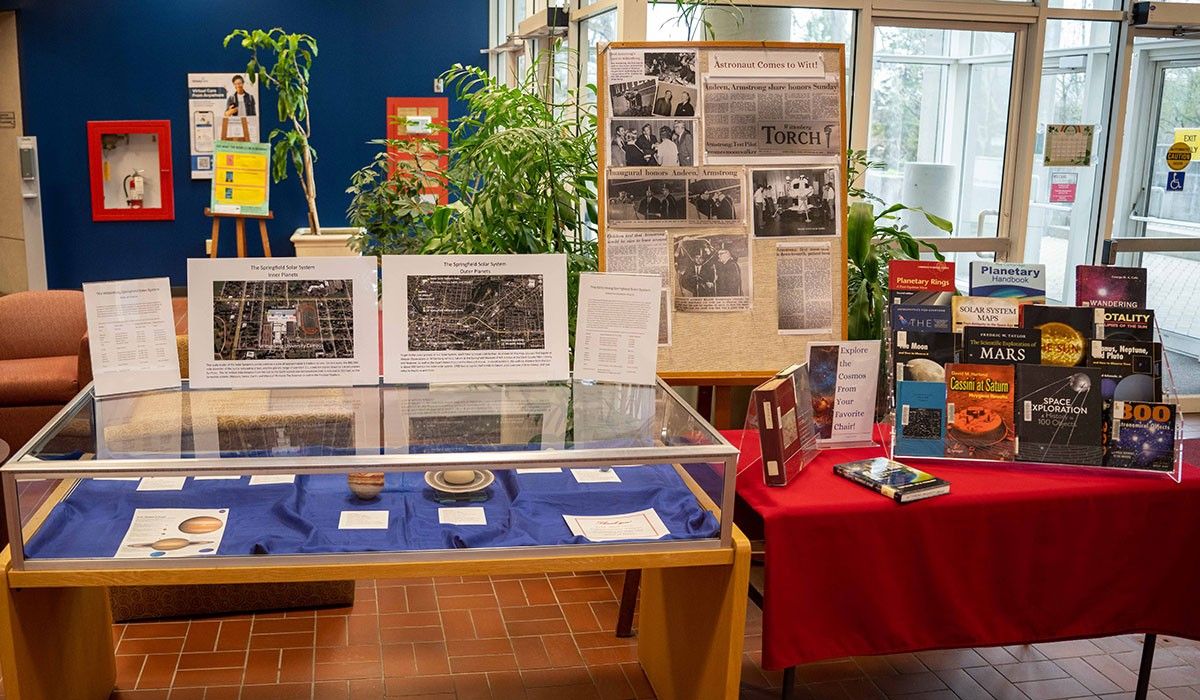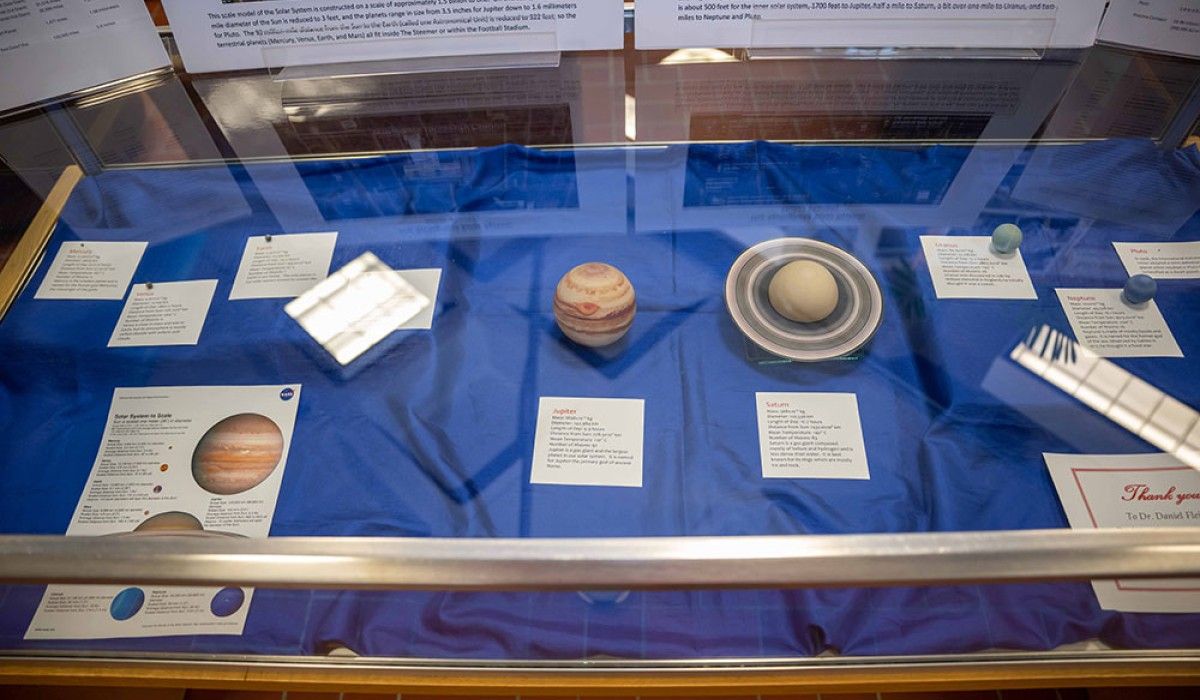With less than a week to go, Wittenberg’s campus is gearing up for the Great North American Eclipse on Monday, April 8. The University’s hometown of Springfield, Ohio, is perfectly positioned in the path of totality, so Wittenberg students, faculty, and staff will have a front-row seat to this once-in-a-lifetime event during WittClipse 2024.
Under the guidance of Assistant Professor in Environmental Science Stacy Porter and Professor Emeritus of Physics Dan Fleisch with support from a WittClipse planning team, the campus community is invited to a viewing party from 11 a.m. to 4 p.m. along the concourse of the Edwards-Maurer Field, part of the Health, Wellness & Athletics Complex.
WittClipse is the brainchild of a committee comprised of experts in astronomy, meteorology, climate change, physics, and more, who have joined together to present a series of activities and events to mark this phenomenon. Weather permitting, activities include raffles, space-themed food, screen printing, temperature sensors, cyanoprints, blackout poetry, pinhole/colander viewers, button making, shadow bands, a remotely piloted vehicle, telescope, a model of the solar system, giant Jenga, corn hole, and other games. Participating departments include Art, Biological and Environmental Sciences, Chemistry, English, Mathematics, Physics, Political Science, World Languages, and the Office of Admission, the Office of Advancement, Student Involvement, and University Communications.
Food will be available at the concession stand along the concourse through the Athletics Department. Special eclipse cookies will also be available, courtesy of Parkhurst Dining. Food vouchers will be given out to the first 300 students. There will also be free stickers featuring the WittClipse 2024 logo, designed by Victoria Pipinich, class of 2025 from Fort Worth, Texas, who is a chemistry major pursuing a math minor in the pre-engineering program. T-shirts, tote bags, and other items will be available to be screen printed with the commemorative logo.
Wittenberg will have safety glasses available for the campus community at the viewing party. Additional safety glasses will be available to students at the Benham-Pence Student Center desk, in residence halls, in the Thomas Library, and at the Wittenberg Police Department.
Also on Eclipse Day, the chapel will hold a brief service of thanksgiving for creation from 2-2:30 p.m. The service will take place at Weaver Chapel and include prayer, readings about creation, and eclipse cookies.
For information on safe viewing of the total eclipse, click here. For more information about eye safety and the eclipse, visit https://eclipse.aas.org/safety.
Fleisch will be in the observatory from 9 a.m. to 2 p.m. if anyone wants to stop by to learn more about eclipse viewing. He will also have a display set up in the Steemer and along the concourse, beginning at 8:30 a.m.
Fleisch, who specializes in electromagnetics and space physics, including astronomy, has led several conversations in print and in-person as the big day nears to help everyone understand what will transpire during this astronomical event in which the sky will darken as the moon passes between the Sun and the Earth for four minutes across a 115-mile path stretching from Mexico to Maine. Depending on the weather, Springfield is expected to receive more than two minutes of totality.
Leading up to the event, Fleisch has visited several local and regional schools and service organizations to present information about the Sun, the eclipse, and how people can make sure that they view the eclipse safely. He has presented each Sunday on campus for the weeks leading up to the eclipse. His presentations have also been featured in the Springfield News-Sun with accompanying articles by Tom Stafford, Wittenberg class of 1976. The last public event will be April 7 at Weaver Observatory, where Fleisch will discuss “Total Solar Eclipse Viewing Tips and Safety.”
Fleisch’s accurately scaled model of the solar system, which was installed on campus and at select locations in the surrounding community, consists of 15 planetary information stations all located at the proper distance from the model Sun, which is represented by a three-foot sphere at Edwards-Maurer Field and the Steemer. There is also a full display at the Thomas Library (see photos below). Surrounding organizations have agreed to host stations for Fleisch as well. The Springfield Museum of Art is featuring Saturn, the Clark County Public Library is hosting Uranus, and the Westcott House is housing both Neptune and Pluto.








